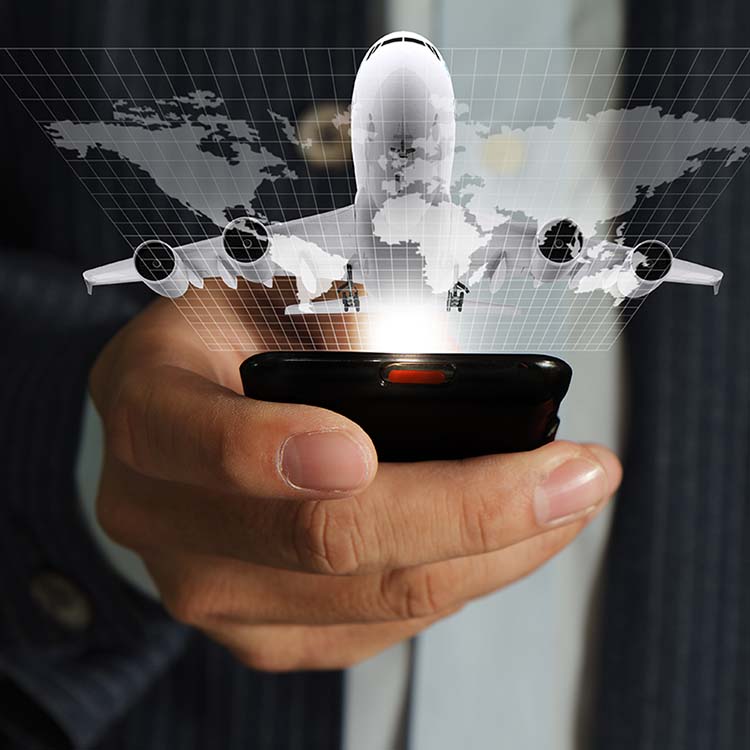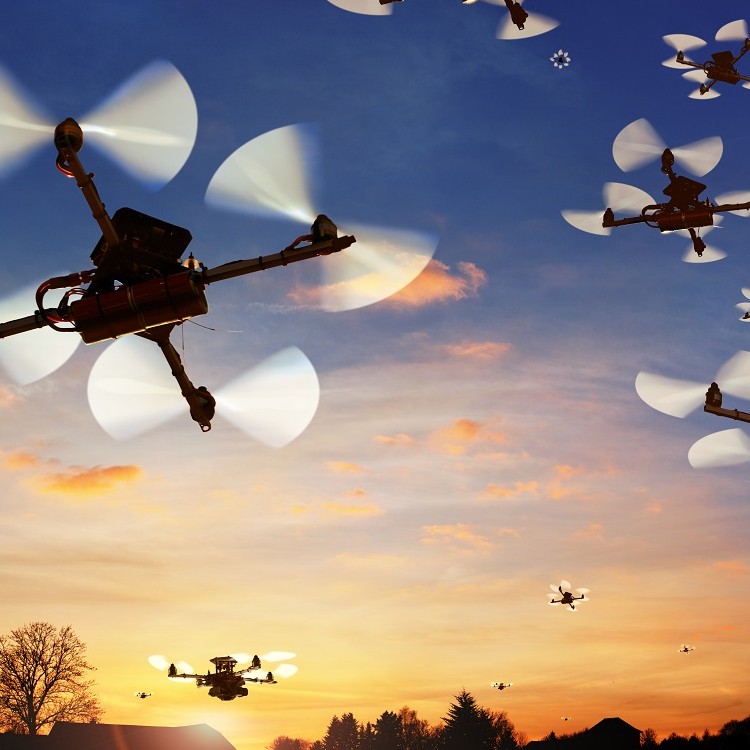It seems as though nobody likes flying. From long lines and frequent delays to uncomfortable security pat-downs and cramped seating, commercial aviation gets a bad rap. And yet, flying remains a miracle of modern engineering that previous generations couldn’t begin to fathom.
To magnify the wonders of aviation and minimize the warts, airlines are turning to a nascent technology that’s taking off faster than a fighter jet: artificial intelligence.
With artificial intelligence in aviation, airlines can minimize their emissions by conserving fuel, increasing safety by detecting maintenance demands, and optimizing routes in the air and on the tarmac, ultimately saving time and money for carriers and passengers alike.
“Using artificial intelligence-enabled computer vision, we build a complete picture of turnaround operations to optimize processes, and to provide constant automated monitoring and alerts to facilitate second-by-second decision-making,” said Christiaan Hen, CEO of Assaia, a startup providing AI solutions to airports and airlines. “With increased visibility, airports can optimize performance, enhance efficiency, and ensure a safer and more sustainable environment.”
If its promises come to pass, AI could help planes soar to new heights, transforming the increasingly troubled aviation industry into a new, more prosperous destination where air travel is loved instead of loathed.
AI is Preparing for Takeoff
Major airlines, from United to American, are investing in AI companies and betting big on capabilities that promise to transform the flying experience for their passengers. Alaska Airlines, for example, is using artificial intelligence to plan more efficient routes for its aircraft.
“It’s like Google Maps, but in the air,” Vikram Baskaran, vice president for information technology services at Alaska Airlines, told The New York Times in May 2024.
Because AI can cultivate data on everything from air traffic to weather from a slew of sources, and synthesize all of that information faster than humans can, Alaska Airlines saved 41,000 minutes of flight time and half a million gallons of fuel last year.
Similarly, American Airlines is using AI to reduce customers' time on the tarmac. According to company documents, its planes spend 17 fewer hours taxiing every day and use an estimated 1.4 million fewer gallons of fuel annually.
“We make gating decisions thousands of times a day,” said Anne Moroni, vice president of operations planning and performance at American Airlines. “Saving precious time on the ground ensures more customers make their connections and we use our resources efficiently.”
There’s also an opportunity to improve on-time performance, as more than 20% of flights currently are delayed, according to the United States Bureau of Transportation Statistics. And with extreme weather from climate change threatening future airborne operations, that number could easilygrow.
“Intense events are happening more often and outside their seasonal norms,” said Sheri Bachstein, chief executive of the Weather Company, which makes weather-forecasting technology.
JetBlue believes that AI weather forecasting company Tomorrow.io could save the airline $4 million dollars a year by helping it avoid nasty weather-related delays.
Safety First
It’s not just about saving money. Because safety has been top of mind for the airline industry in recent months — following multiple incidents onboard Boeing aircraft — it’s also about saving lives.
On that note, German airline Lufthansa is experimenting with leveraging artificial intelligence to do predictive maintenance, helping identify potential hazards before something goes awry and decreasing the amount of downtime an aircraft must spend while it’s being serviced.
One of Assaia’s products utilizes sensors to detect dangerous situations during aircraft turnarounds and ensure ramp safety at airport gates, decreasing unsafe behavior by 50%.
The implications of this technology reach beyond commercial aviation, too. The U.S. Air Force made headlines last month, for instance, after it announced the first successful AI dogfight. During the simulation, an AI-piloted aircraft went head-to-head with a human pilot for the first time in history. The computer-powered aircraft reached speeds of up to 1,200 miles per hour while it ran a machine learning algorithm trained on historical data. Although the results of the drill have not been made public, the implications for the future of military aviation seem clear.
“We need to recognize that AI is here. It’s here to stay. It’s a powerful tool,” Air Force Col. Tucker Hamilton said in a video published by the Air Force Research Laboratory.
Data Flying Through the Clouds
Whether designed for civilian or government aircraft, artificial intelligent systems rely on heaps of data. Thanks to the cloud, gathering, storing, and synthesizing that data into something actionable is possible.
Qatar Airways and American Airlines have each announced collaborations with different cloud providers to create personalized offerings to their passengers, “using data to streamline operations, reducing travel paint points” and advancing the customer experience.
So when a flight cruises through the clouds safely, sustainably and on time, travelers might have artificial intelligence to thank.
Editor’s note: Learn about Nutanix GPT in a Box 2.0 and how the Nutanix Cloud Platform can jumpstart AI transformations with optimal infrastructure that delivers control, privacy, and security.
Chase Guttman is a technology writer. He’s also an award-winning travel photographer, Emmy-winning drone cinematographer, author, lecturer and instructor. His book, The Handbook of Drone Photography, was one of the first written on the topic and received critical acclaim. Find him at chaseguttman.com or @chaseguttman.
© 2024 Nutanix, Inc. All rights reserved. For additional information and important legal disclaimers, please go here.





